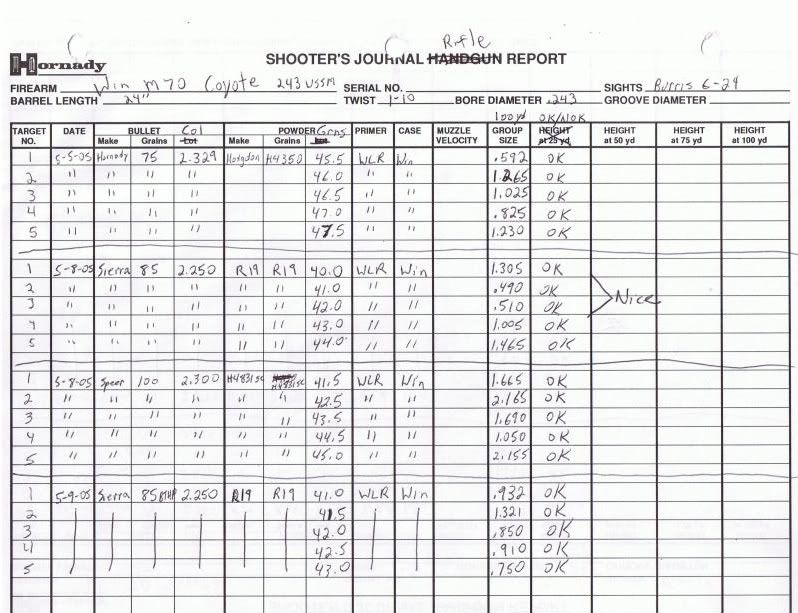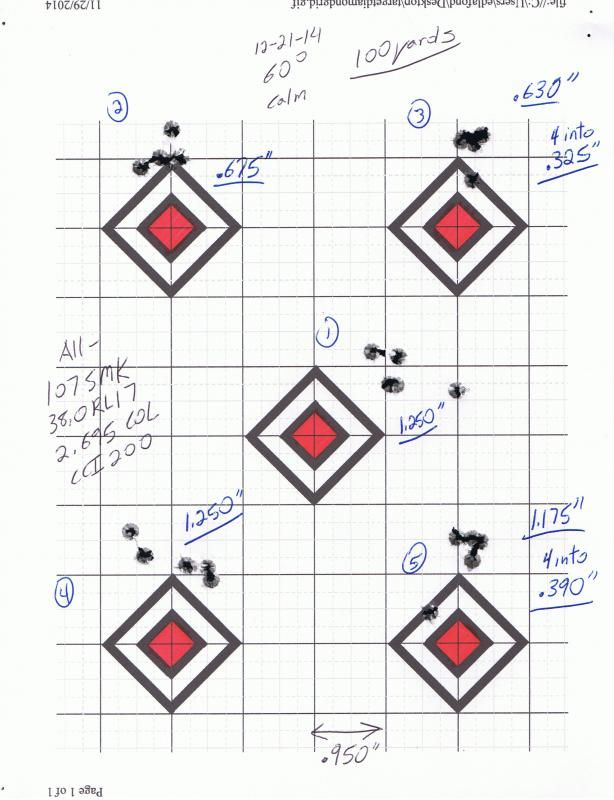To Metal God's list I would add barometric pressure and relative humidity, as both affect air density and, to a lesser extent than temperature, the speed of sound. Light conditions are important for iron sights. I would also add spaces for barrel length and rifling pitch and twist direction (or simply adopt + for right-hand and – for left-hand). I would add a space for number of clicks of elevation and windage off the rifle's reference load zero, and a check box to indicate you returned it to that zero at the end of the range session. The number of rounds between cleanings and fouling shots after cleanings before measurements begin again might deserve spaces or might simply be better put in the notes.
I also wind up logging specifics for particular experiments. If I have the Pressure Trace out, I want to note the settings and to note any load I am using as a pressure reference. I often want to note either jump to the lands or the distance from the headspacing location on the case (rim, belt, shoulder datum, case mouth) to the bullet ogive in place of OAL. Cartridge runout, target type employed, average groups size for the day, sight used, firing angle if not flat. If you are shooting long range, longitude and latitude and firing direction can all factor in.
With all that data, you probably won't fill out half the spaces under many circumstances, but having them there helps serve as reminders not only for filling out, but to make allowances for each factor as you set up your gun. Filling out as many spaces as you can gives you the opportunity to use data at a later date to help identify an issue. You might have, say, irregular accuracy, but discover later it turns out to correlate to some factor on the list you hadn't thought was important before.
You also want not only the shooting log but a gun log. You want to track how many rounds are through your barrel, what trigger weight you have, note maintenance events, changes in configuration, etc.
One other thing you can do is look at databooks published for the various target shooting disciplines. A lot they have in them may translate over to your experiments and help you decide what to include.


